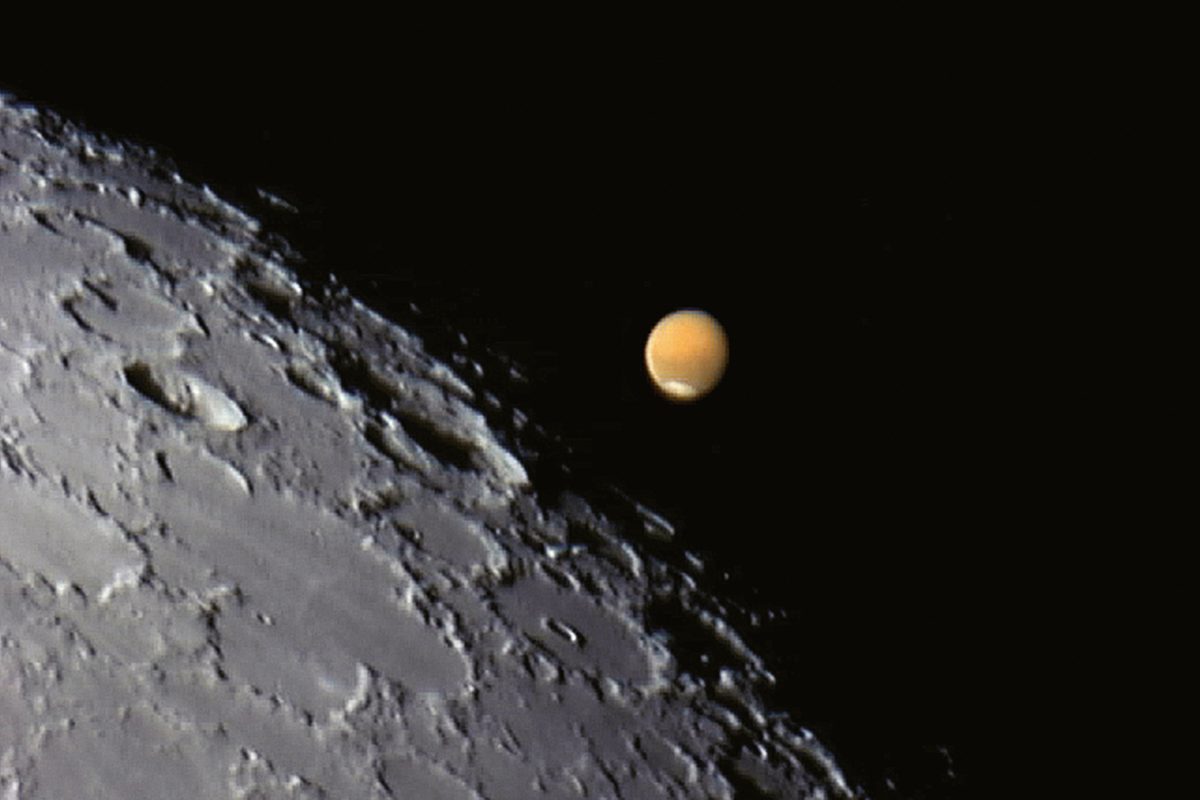CNN's Wonder Theory science newsletter offers readers a chance to delve deeper into the cosmos, providing updates on remarkable discoveries and scientific progress. One upcoming celestial event that has captured the attention of sky-gazers is the wolf moon, the first full moon of the year. On Monday evening, viewers will be treated to a cosmic spectacle as the moon appears to pass in front of Mars, creating a celestial triangle in the sky.
The wolf moon is set to reach peak illumination at 5:27 p.m. ET on Monday, but its full appearance will extend until Wednesday morning as per NASA's observations. Sky watchers in various locations, including the continental United States, eastern Canada, Africa, and Mexico, will be able to witness Mars positioned just to the lower left of the moon, with the bright star Pollux shining a few degrees to the upper left of the moon.
For those eager to catch the moon passing in front of Mars, the timings will vary, prompting sky enthusiasts to consult their preferred sky-watching apps for accurate schedules. On the US East Coast, Mars is anticipated to disappear behind the bottom of the moon at approximately 9:16 p.m. ET and reappear behind the upper right of the moon at about 10:31 p.m. ET.
Apart from being termed the wolf moon due to the howling of wolves during this season, January's full moon also carries several other names across different cultures. The Cherokee people refer to it as the cold moon, while the Lakota call it the hard moon, and the Passamaquoddy tribe dubs it the whirling wind moon. In European traditions, it is known by various names such as the ice moon, the old moon, or the moon after Yule, a festival celebrated in pre-Christian Europe near the winter solstice.
Coinciding with January's full moon is the commencement of the Hindu pilgrimage and 44-day Prayag Kumbh Mela festival held every 12 years in the Indian city of Prayagraj. While the full moon will be observable worldwide, weather conditions permitting, viewers in the Northern Hemisphere are advised to dress warmly to enjoy the celestial display.
Following the fascinating lunar occultation of Mars, sky-watchers can look forward to witnessing the red planet at its brightest and closest on Wednesday. This phenomenon coincides with Mars being at opposition, directly opposite the sun from Earth's perspective, increasing its brightness in the night sky. Throughout January, Mars will shine brightly in the eastern sky each evening and in the northwest during dawn.
In addition to Mars, other planets will also be visible this month, providing sky enthusiasts with a spectacle of four bright planets simultaneously on display. Venus and Saturn will be evident in the southwest, Jupiter will gleam overhead, and Mars will ascend in the east, gradually rotating westward around the bright star Polaris.
While some may consider this planetary alignment unusual, it is a natural occurrence resulting from the planets orbiting the sun in a mostly flat plane called the ecliptic. As the planets follow the path of the sun across the sky, they appear to be aligned along an imaginary line from Earth's perspective.
As the bright planets parade across the night sky this month, viewers are encouraged to explore further by setting up telescopes to potentially spot moons around these neighboring worlds. Be sure to mark upcoming astronomical events, like annual meteor showers and lunar and solar eclipses, on your calendar to enhance your stargazing experience.
Overall, with a calendar full of celestial wonders and cosmic phenomena, 2025 promises to be an exciting year for astronomy enthusiasts worldwide, offering opportunities to witness rare celestial events and marvel at the beauty of the universe. So, keep your eyes on the sky and stay tuned for more captivating discoveries and celestial displays.


